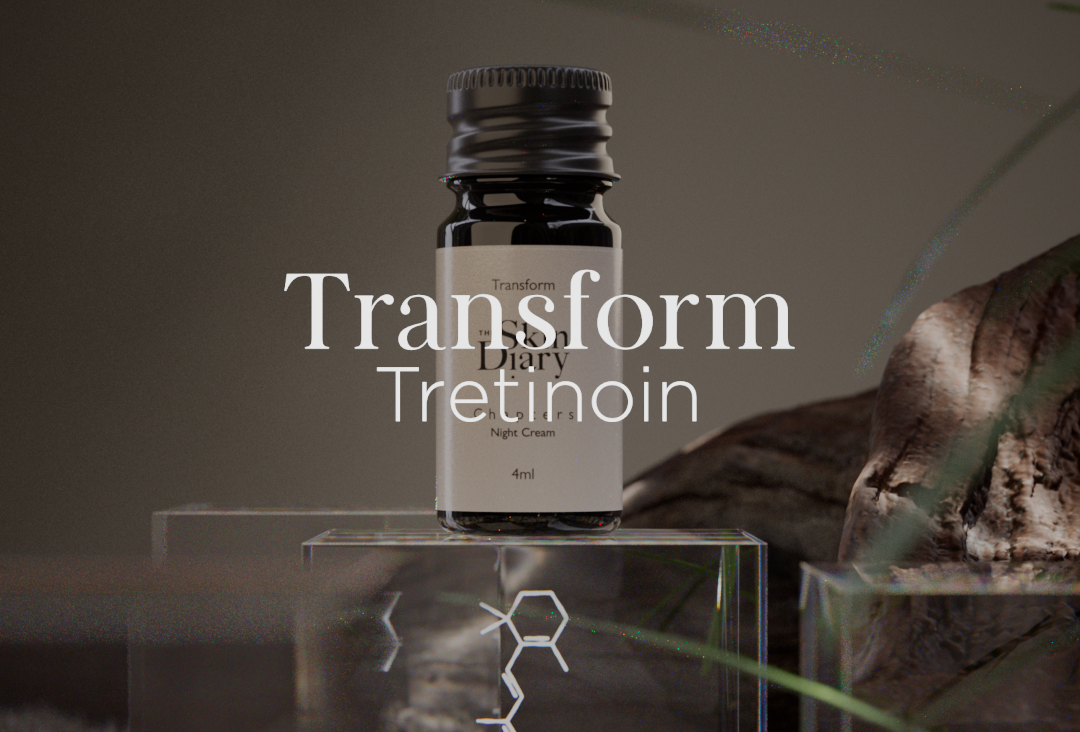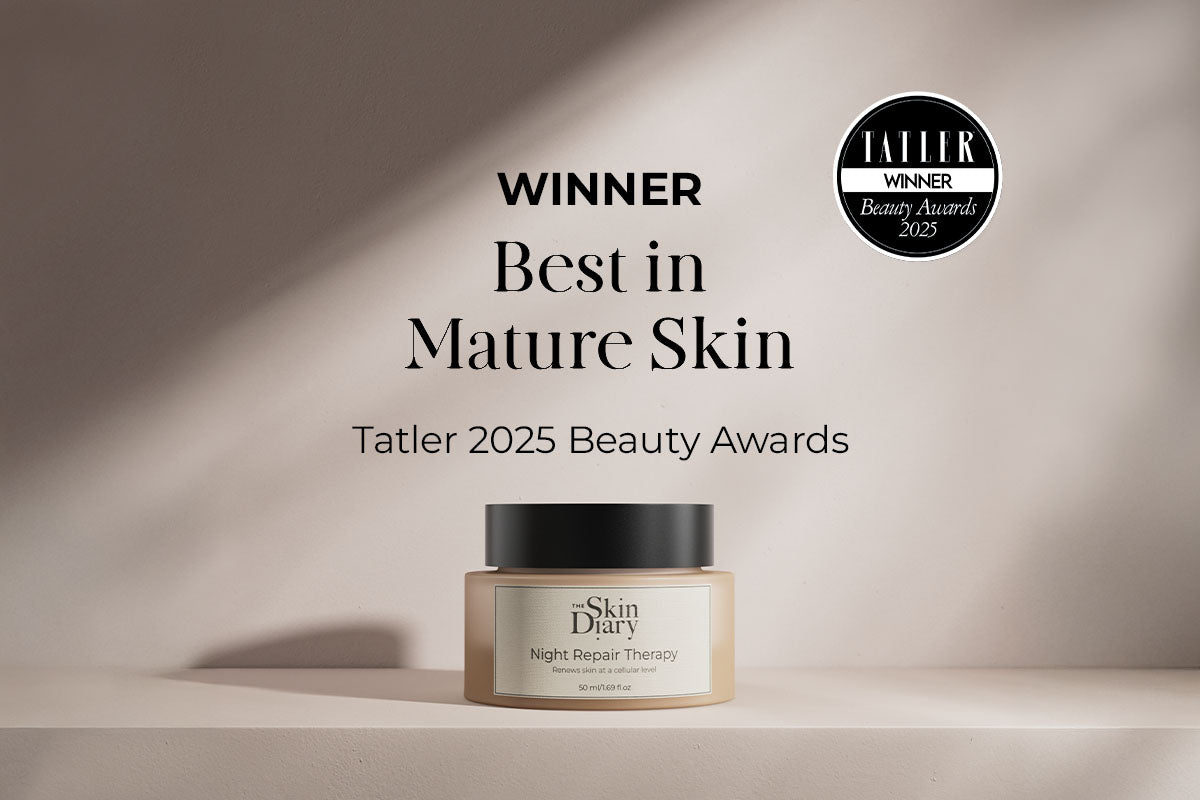You’ll probably hear us talk a lot about tretinoin and its many impressive credentials. Known as the gold-standard in skin ageing, it can be a game-changing product in a skincare routine and has been used by dermatologists for years.
The Skin Diary’s Chief Scientist Professor Chris Griffiths’s research at the Universities of Michigan and Manchester helped lay the foundations for how we understand retinoids and the skin. So it’s fair to say we know a thing to two about the ingredient.
We’re looking into exactly what tretinoin is, how you can incorporate it into your routine (with the help of our team), plus any potential side effects and frequently asked questions.
What is tretinoin?
Tretinoin cream is a vitamin A derivative that treats various skin concerns such as signs of ageing, photodamage and even acne-prone skin.
It’s prescription-strength meaning you need to get a prescription from a dermatologist (or your GP) to use it. The reason it’s prescription-strength is because it’s a powerful treatment and usage needs to be monitored by a physician.
Tretinoin is the most bioactive form of retinoic acid (you might also see it referred to as all-trans retinoic acid or ATRA). It was first used to treat patients in the 1980s following pioneering but highly controversial experiments carried out by Albert Kligman in 1950-1970 in Holmsworth prison.
Tretinoin is available in various strengths, typically used strengths are: 0.025%, 0.05% and 0.1% and it’s far more potent than over-the-counter retinoids, hence the need for expert guidance and a prescription. Tretinoin is available as a cream or a gel formula.
How does tretinoin work?
“Once they have converted to retinoic acid [in the case of tretinoin though, it’s already converted], the retinoic acid then binds to a binding protein and it’s transported via this binding protein into the cell,” explains The Skin Diary’s Chief Medical Officer Dr. Clare Kiely. “Once it’s in the cell it’s transported to the nucleus where they bind to the nuclear receptors RAR and RXR receptors, these bind to specific DNA sequences, which then have their effect, which leads to a myriad of improvements on the epidermis and dermis.”
Tretinoin increases cell turnover, ridding dead skin cells and making way for new ones. It keeps pores free from clogging (known as follicular plugging) and prevents dead skin cells from outstaying their welcome. And enhance elastin and collagen production.
What are the benefits of tretinoin?
There are multiple benefits of tretinoin, which is why it's such a widely used ingredient in skin ageing.
The main benefits is its ability to improve photo damaged skin and signs of ageing, including sun spots, wrinkles and skin texture. This is why it's referred to as the gold-standard in skin ageing because the results can be phenomenal.
It can also help improve acne by targeting inflammation and clogged pores.
How to use tretinoin?
It’s important to note that your prescriber, which, if you’re on The Skin Diary’s Chapters our dermatology team, can guide you on how to use it based on your skin type and history. As a general rule, tretinoin is applied at night on dry skin after cleansing before using moisturiser.
You don’t need much of the product for it to be effective; more is not more when it comes to retinoids because that’ll lead to irritation. Low and slow is the aim of the game; you’ll start at a lower concentration and slowly build up your tolerance to it. Starting twice a week and building up as and when you need to. It can take your skin some time to adjust, which is why it’s a product that needs expert guidance.
What is the difference between retinol and tretinoin?
Both retinol and tretinoin are vitamin A derivatives but tretinoin is biologically active whereas other retinoid compounds have to go through a conversion process to become active. This means that tretinoin is more potent, which is why it requires a prescription and other retinoids such as retinol can be purchased over-the-counter and are found in many beauty products.
Side effects of tretinoin?
There are a few common side effects of tretinoin but don’t let that put you off. Your prescribing doctor will explain all of these as well as how to reduce the likelihood of them. Common side effects include peeling, dry skin, redness, irritation and purging (you may feel like your skin gets worse before it gets better).
Tretinoin FAQs
How to get tretinoin in the UK? You can get tretinoin in the UK via a prescription from a GP or dermatologist. In other countries it can be bought without a prescription.
Is it OK to use tretinoin everyday? To begin with, tretinoin should not be used daily as you’ll likely experience irritation. Follow your doctor’s advice for best results, but for most people, starting with two days a week and building up your tolerance is advised.
How long does it take for tretinoin to work? Skincare takes time to see results, so stay consistent and patient. You should start seeing results after around 6 weeks with continued improvement as the week progresses.
Up next: acne and menopause
If you’re a clinician and would like to know more, visit our education portal to watch our webinar on the growing retinoid family.





